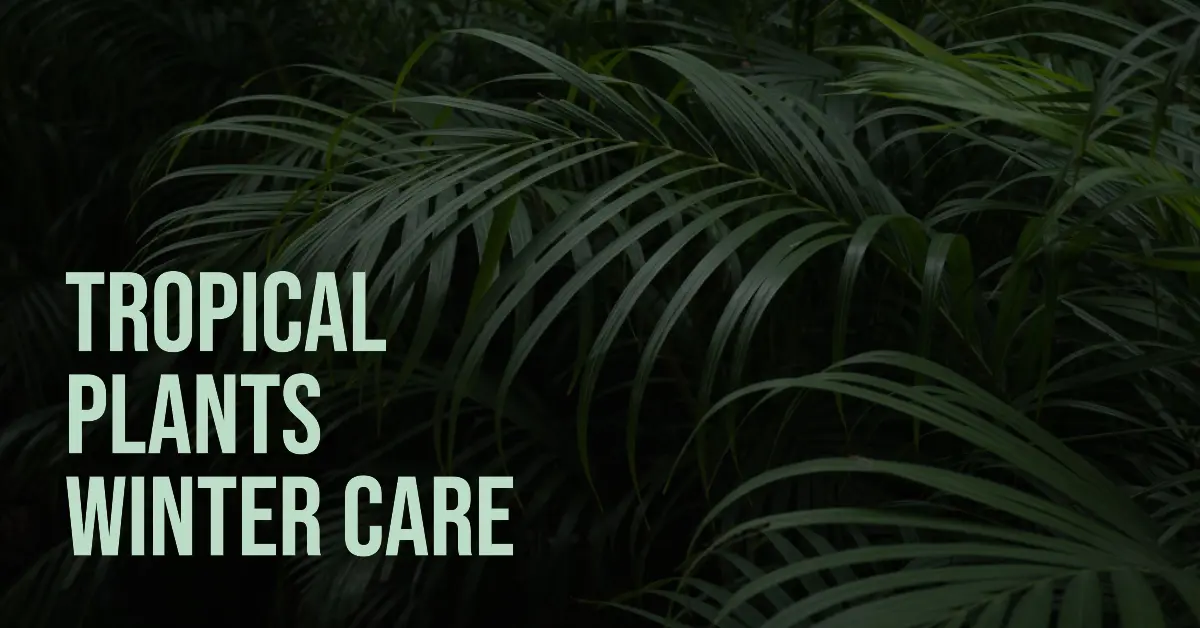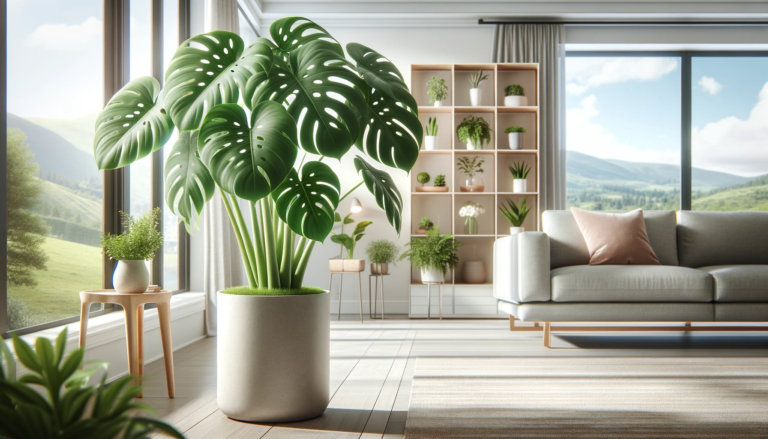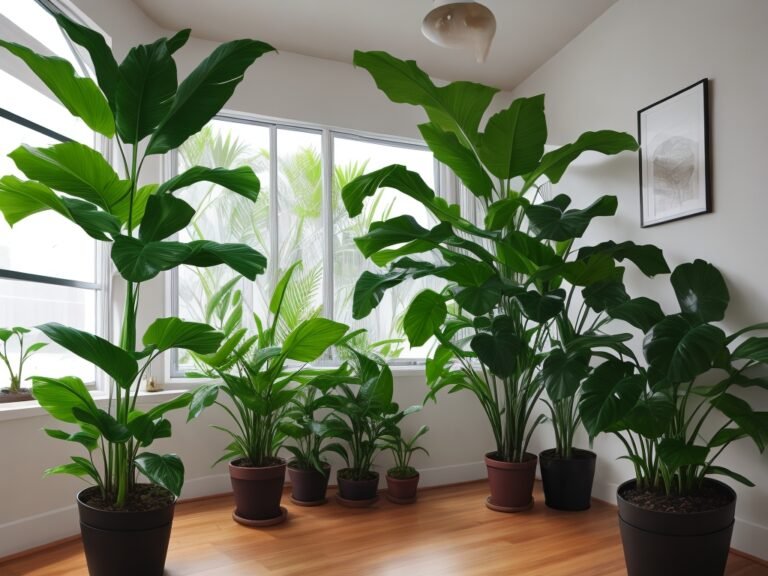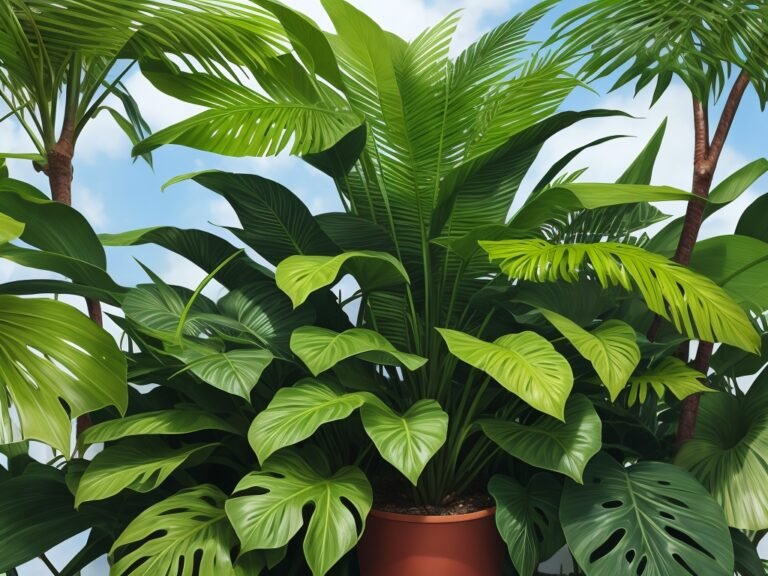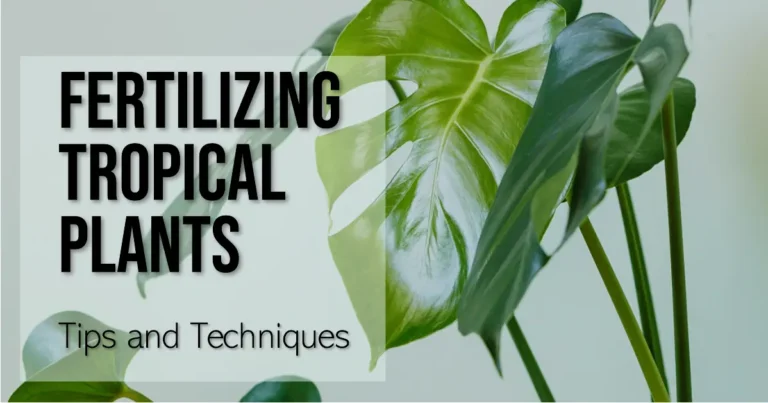Tropical Plants Winter Care: Tips and Tricks for Keeping Your Plants Healthy During Cold Months
Tropical Plants Winter Care: An Essential Guide
Tropical plants enrich our spaces, bringing a breath of fresh air and a splash of vibrant colors. Yet, when winter knocks on the door, they ask for a little extra affection to weather the harsh conditions. Let’s delve deeper into the realm of tropical plants winter care.
Understanding Your Tropical Plants
Tropical plants boast diversity, native to warm, humid areas usually near the equator. Their lush foliage and rapid growth can adorn any indoor space with an exotic ambiance.
But remember:
- They thrive in warm, humid environments.
- Abrupt changes in light or temperature can stress them.
- Monitoring their nutrient and water intake is essential.
Your task? Create a snug, humid sanctuary for them indoors, nurturing them with careful attention to their distinct needs. Mirroring the nurturing warmth of their natural habitats will go a long way.
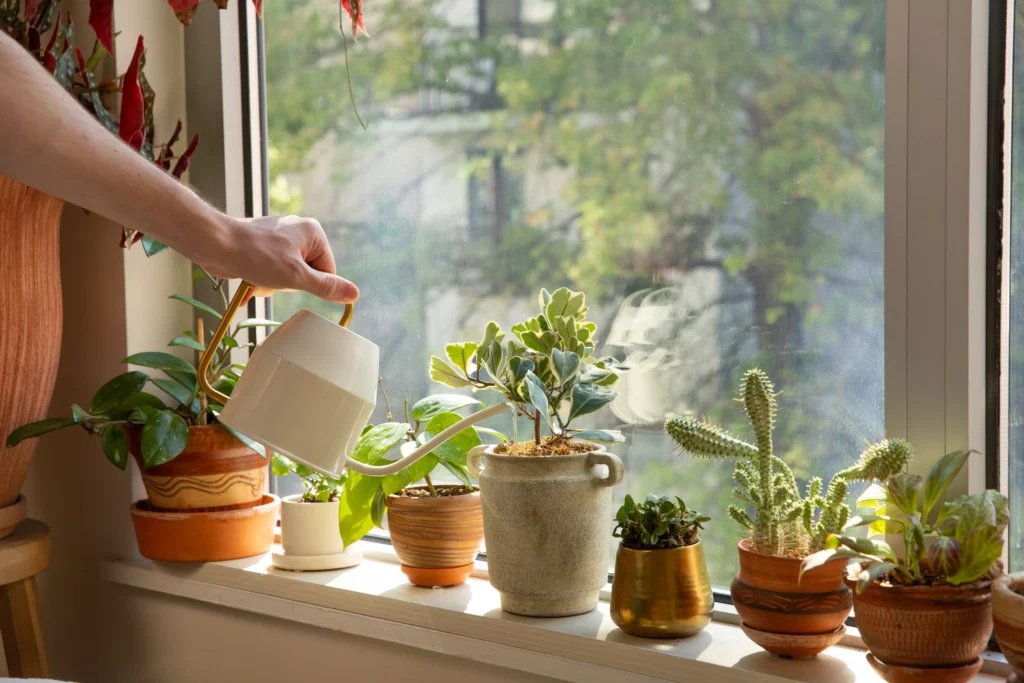
Winter Hurdles for Your Tropical Beauties
Winter rolls in with a set of challenges for tropical plants, including:
- Cold temperatures – threatening to damage the leaves and stems.
- Drafts – a sudden drop can shock your plants, causing harm to their physical structure.
- Reduced sunlight levels – which can potentially slow down their growth.
Being aware of these challenges is the first step to overcoming them. Let’s break it down further.
Bracing Against the Cold
Tropical plants are no fans of cold weather, and exposure to temperatures below 50°F can be damaging. Here’s how to protect them:
- Before the Freeze – Move them indoors before temperatures plummet.
- Shielding the Giants – For those too large to be moved indoors, shielding with blankets or burlap can offer a layer of protection.
- Draft-Proofing Your Home – Ensure windows and doors are sealed to keep the cold air out and avoid shocking your plants with sudden temperature drops.
Tip: Always have a weather app handy to stay updated on temperature fluctuations.
Mitigating Reduced Sunlight
Winter days are short, giving limited sunlight to your plants. You can counter this by:
- Changing Plant Location – Move them closer to windows to absorb maximum daylight.
- Using Grow Lights – Supplement the natural light with LED grow lights covering the full spectrum.
Creating a nurturing environment with the right light levels can maintain their lush growth, keeping the tropical vibe alive in your space.
Indoor Tropical Plants Winter Care
Indoor care is pivotal in winter, encapsulating proper watering, fertilization, and guarding against pests. Here’s your guide to ensure the tropical plants winter care is top-notch:
| Aspect | Details |
|---|---|
| Potting Mix | Choose well-draining, high-quality mix containing perlite or vermiculite |
| Containers | Opt for ones with adequate drainage to avoid water logging |
| Humidity & Heat | Maintain warmth and use humidifiers to elevate humidity levels |
| Grow Lights | Supplement natural light with grow lights for sustained growth |
Remember to create a harmonious microclimate, grouping plants with similar needs together. Regular monitoring will help in making necessary adjustments to care routines, ensuring a happy, thriving green space.
Summing Up
Tropical plants can remain a vibrant and refreshing presence in your home even during the cold winter months. With a deep understanding and a nurturing approach, your tropical paradise need not wither with the onset of winter.
Steer clear of generic advice, and tune into your plants’ specific needs, offering them a warm embrace in cold times. That’s the secret to tropical plants winter care that brings results. Stay warm, stay lush!
Watering and Fertilizing in Winter
As the winter season approaches, adjusting the watering and fertilizing routine for tropical plants is important. During this time, the plants’ growth rate slows, requiring less water and nutrients. Overwatering and over-fertilizing can lead to root rot and damage to the plant.
I make sure to check the soil’s moisture level before watering my tropical plants. I stick my finger about an inch into the soil to see if it feels moist. If the soil feels dry, I water the plant thoroughly, but I make sure not to let it sit in standing water. I also ensure that the pot has a drainage hole to prevent water from accumulating at the bottom.
In terms of fertilizing, I reduce the frequency and strength of the fertilizer I use during the winter. I typically fertilize my tropical plants every two weeks during the growing season, but during the winter, I fertilize them once a month with a weaker solution. I also make sure to use a fertilizer specifically designed for tropical plants to provide them with the necessary nutrients.
It is important to note that not all tropical plants have the same watering and fertilizing needs. Some plants require consistently moist soil, while others prefer to dry out between waterings. It is essential to research and understand each plant’s specific needs to ensure optimal health and growth.
Preventing and Treating Pests and Diseases
As a tropical plant owner, it’s important to be aware of the potential pests and diseases that can harm your plants. Here are some tips to prevent and treat these issues:
Pests:
Pests are a common problem for tropical plants. Some of the most common pests include spider mites, aphids, and mealybugs. To prevent pests, regularly inspect your plants for signs of infestation. If you notice any pests, isolate the affected plant and treat it immediately.
One effective treatment for pests is insecticidal soap. This type of soap is specifically designed to kill pests without harming the plant. Simply spray the affected areas with the soap, making sure to cover all sides of the leaves.
Diseases:
Diseases can also be a problem for tropical plants. Some common diseases include root rot, powdery mildew, and black spot. To prevent diseases, make sure to keep your plants in well-draining soil and avoid overwatering.
Remove the affected areas immediately if you notice any signs of disease, such as discolored or wilting leaves. You may also need to treat the plant with a fungicide. Be sure to follow the instructions on the label carefully.
Spider Mites:
Spider mites are a common pest for tropical plants. These tiny pests can cause significant damage to your plants if left untreated. To prevent spider mites, regularly inspect your plants for signs of infestation.
If you notice any spider mites, isolate the affected plant and treat it immediately. One effective treatment is to spray the plant with a solution of water and dish soap. Be sure to cover all sides of the leaves.
In summary, pests and diseases can be a problem for tropical plants, but you can prevent and treat these issues effectively with proper care and attention. Regularly inspect your plants for signs of infestation or disease, and take action immediately if you notice any problems.
Overwintering Specific Tropical Plants
As a plant enthusiast, overwintering tropical plants can be challenging, especially if you live in a cold climate. However, with proper care, keeping your tropical plants alive and healthy throughout the winter is possible. In this section, I will provide tips on overwintering specific tropical plants.
Mandevilla
Mandevilla is a beautiful tropical vine that produces showy flowers. To overwinter mandevilla, you should bring it indoors before the first frost. Prune the plant back by about one-third, and place it in a bright location with temperatures between 60-65°F. Water the plant sparingly, and do not fertilize it until spring.
Hibiscus
Hibiscus is a popular tropical plant that produces large, colorful flowers. To overwinter hibiscus, you should bring it indoors before the first frost. Prune the plant back by about one-third, and place it in a bright location with temperatures between 60-65°F. Water the plant sparingly, and do not fertilize it until spring.
Elephant Ear
Elephant ear is a tropical plant that produces large, impressive leaves. To overwinter elephant ear, you should dig up the bulb after the first frost, and store it in a cool, dry place for the winter. Replant the bulb in the spring after the danger of frost has passed.
Banana Trees
Banana trees are tropical plants that produce delicious fruit. To overwinter banana trees, you should bring them indoors before the first frost. Prune the plant back by about one-third, and place it in a bright location with temperatures between 60-65°F. Water the plant sparingly, and do not fertilize it until spring.
Caladiums
Caladiums are tropical plants that produce colorful foliage. To overwinter caladiums, you should dig up the bulbs after the first frost, and store them in a cool, dry place for the winter. Replant the bulbs in the spring after the danger of frost has passed.
Cannas
Cannas are tropical plants that produce bright, showy flowers. To overwinter cannas, you should dig up the bulbs after the first frost, and store them in a cool, dry place for the winter. Replant the bulbs in the spring after the danger of frost has passed.
Begonia
Begonias are tropical plants that produce colorful flowers. To overwinter begonias, you should bring them indoors before the first frost. Place the plant in a bright location with temperatures between 60-65°F. Water the plant sparingly, and do not fertilize it until spring.
Fiddle Leaf Figs
Fiddle-leaf figs are tropical plants that produce large, impressive leaves. To overwinter fiddle leaf figs, you should bring them indoors before the first frost. Place the plant in a bright location with temperatures between 60-65°F. Water the plant sparingly, and do not fertilize it until spring.
Pothos, Philodendron, and Coleus
Pothos, philodendron, and coleus are tropical plants that are commonly grown as houseplants. To overwinter these plants, you should keep them indoors year-round in a bright location with temperatures between 60-75°F. Water the plants regularly, and fertilize them every two weeks during the growing season.
Geranium
Geraniums are tropical plants that produce colorful flowers. To overwinter geraniums, you should bring them indoors before the first frost. Place the plant in a bright location with temperatures between 60-65°F. Water the plant sparingly, and do not fertilize it until spring.
Tropical Hibiscus
Tropical hibiscus is a popular tropical plant that produces large, colorful flowers. To overwinter tropical hibiscus, you should bring it indoors before the first frost. Prune the plant back by about one-third, and place it in a bright location with temperatures between 60-65°F. Water the plant sparingly, and do not fertilize it until spring.
Preparing Tropical Plants for Summer
As a plant enthusiast, I know how important it is to prepare tropical plants for the summer season. The summer season is the growing season for most tropical plants, and it is essential to ensure that they are ready to thrive during this time. Here are some tips on how to prepare your tropical plants for the summer season:
Prune Your Tropical Plants
Pruning your tropical plants is crucial in preparing them for the summer season. Pruning helps to reduce the size of your plants, which makes it easier for them to acclimate to the summer weather. It also helps to remove any dead or damaged branches, which can hinder the growth of your plants.
Reduce the Size of Your Tropical Plants
Reducing the size of your tropical plants is another important step in preparing them for the summer season. This helps prevent your plants from becoming too large and heavy, making them more vulnerable to strong winds and heavy rain.
Acclimate Your Tropical Plants
Acclimating your tropical plants to the summer weather is also essential. This involves gradually exposing your plants to the warmer temperatures and increased humidity that come with the summer season. You can do this by gradually increasing the amount of time your plants spend outside each day.
Water Your Tropical Plants
Watering your tropical plants is also crucial in preparing them for the summer season. During the summer months, your plants will require more water than they do during the rest of the year. Be sure to water your plants regularly and deeply to ensure that they stay healthy and hydrated.
Protect Your Tropical Plants from Rain
Finally, protecting your tropical plants from heavy rain during the summer is important. Heavy rain can damage your plants, making them more vulnerable to pests and diseases. You can protect your plants by covering them with a tarp or moving them to a sheltered location during heavy rain.
By following these tips, you can ensure that your tropical plants are ready to thrive during the summer season.
Protecting Tropical Plants in Winter
As the winter season approaches, protecting your tropical plants from the cold weather is important. Here are some ways to protect your tropical plants during the winter season:
Overwintering Indoors
One of the best ways to protect your tropical plants during winter is to overwinter them indoors. Before bringing them inside, make sure to treat them for pests and re-pot them if needed. Place them in a bright, sunny spot indoors and provide them with 12-14 hours of bright indirect light. Water them about once a week and maintain a temperature within 65-75°F (18 -24°C). Provide a humidity of 60% or more and fertilize bi-weekly in spring and summer using a liquid fertilizer.
Heavy Mulch
Another way to protect your tropical plants during winter is to use heavy mulch. Apply a thick layer of mulch around the base of your plants to insulate the roots and protect them from the cold. Make sure to use a mulch that is appropriate for your plants, such as pine straw or shredded leaves.
Covers
You can also protect your tropical plants during the winter season by covering them. Use blankets, sheets, or burlap to cover your plants and protect them from the cold. Make sure to remove the covers during the day to allow sunlight to reach your plants.
Garage or Greenhouse
If you have a garage or a greenhouse, you can also protect your tropical plants by storing them there during the winter. Ensure to maintain a temperature within 65-75°F (18 -24°C) and provide them with 12-14 hours of bright indirect light. Water them about once a week and provide a humidity of 60% or more. Fertilize bi-weekly in spring and summer using a liquid fertilizer.
Dormancy
Some tropical plants may go dormant during the winter season. If your plants go dormant, reduce watering and stop fertilizing them. Maintain a temperature within 55-60°F (12-15°C) and provide them with low light. Once the winter season is over, resume regular care for your plants.
Protecting your tropical plants during winter is important to ensure their survival. Use these tips to keep your plants healthy and thriving all year round.
Storing Bulbs and Tubers
As the weather starts to cool down, it’s time to start thinking about how to protect your tropical plants during the winter months. Storing bulbs and tubers is a great way to ensure that your plants will survive the colder temperatures and be ready to thrive in the spring.
When it comes to storing bulbs and tubers, there are a few things to keep in mind. First, make sure to wait until after the first few frosts have turned the leaves brown before digging up the bulbs. This will give them time to properly mature and be ready for storage.
Once you’ve dug up your bulbs, it’s important to properly store them to prevent rot and other damage. One option is to store them in peat moss or vermiculite. This will help keep them dry and prevent them from drying out too much.
Another option is to store them in a cool, dark place. This can be a basement, garage, or even a closet. Make sure to keep them away from any heat or light sources, as this can cause them to dry out or rot.
To further protect your bulbs and tubers, you can also add a layer of mulch on top of them. This will help insulate them and keep them at a consistent temperature throughout the winter.
Storing bulbs and tubers is a great way to ensure that your tropical plants will survive the winter and thrive in the spring. By following these simple tips, you can keep your plants healthy and happy all year round.
Conclusion
In conclusion, winter care for tropical plants is essential to ensure their survival during the colder months. There are several ways to overwinter tropical plants, and the best method depends on the specific needs of each plant.
One option is to bring the plants indoors and provide them with adequate light, humidity, and temperature. This can be achieved by placing them near a sunny window, using a humidifier, and keeping the temperature between 60-70°F. Another option is to dig up the bulbs and store them indoors in a cool, dry place.
It’s important to note that there are several factors to consider when overwintering tropical plants, including plant hardiness, light requirements, and water needs. It’s crucial to research the specific needs of each plant and adjust your care accordingly.
Additionally, before bringing your plants indoors, it’s a good idea to thoroughly clean them to reduce the risk of pests and diseases. You can do this by hosing them down and inspecting the leaves for any signs of damage or infestation.
Overall, with proper care and attention, tropical plants can survive the winter and thrive for years to come. By following the tips and techniques outlined in this article, you can ensure that your plants stay healthy and vibrant throughout the colder months.
Frequently Asked Questions
How do you keep indoor tropical plants alive during winter?
During the winter, indoor tropical plants need less water and fertilizer than in other seasons. They also require more light. To keep them alive, ensure they are placed in a well-lit area and the soil is allowed to dry out between watering. You can also use a humidifier to maintain the humidity level.
What are the best plants for inside a pool enclosure?
Plants that can thrive in a high-humidity environment are the best for inside a pool enclosure. Some examples of these plants include bamboo, ferns, palms, and orchids. Choosing plants that can handle the humidity and temperature changes that come with being in a pool enclosure is important.
Can tropical plants be brought inside for the winter?
Yes, tropical plants can be brought inside for the winter. However, it’s important to gradually ensure they acclimate to the indoor environment. Sudden changes in temperature and light can cause stress and damage to the plant. It’s also important to ensure they are placed in a well-lit area and that the soil can dry out between watering.
What should you do with tropical plants during the winter?
During the winter, tropical plants should be protected from cold temperatures and frost. If they are kept outside, they should be covered with a frost cloth or moved to a warmer location. If they are brought inside, they should be placed in a well-lit area and the soil should be allowed to dry out between watering.
How do you keep tropical plants alive outside during the winter?
To keep tropical plants alive outside during the winter, it’s important to protect them from cold temperatures and frost. This can be done by covering them with a frost cloth or moving them to a warmer location. It’s also important to make sure they are well-watered and fertilized before the winter months.
What are some flowering tropical plants for winter?
Some examples of flowering tropical plants for winter include poinsettias, amaryllis, Christmas cactus, and orchids. These plants can add color and beauty to your home during winter. It’s important to ensure they are placed in a well-lit area and the soil is allowed to dry out between watering.

